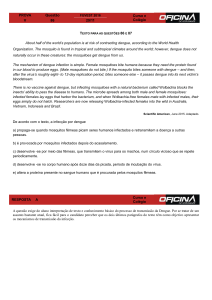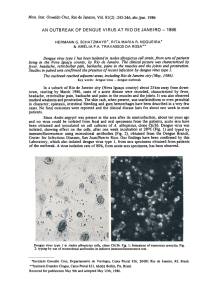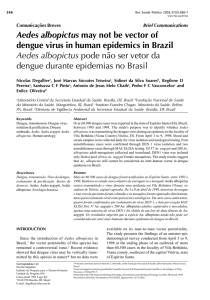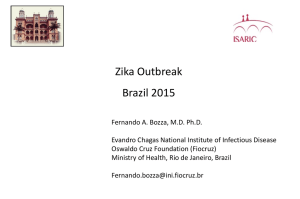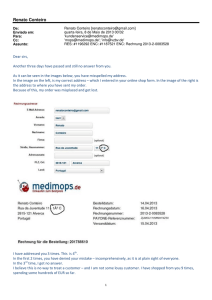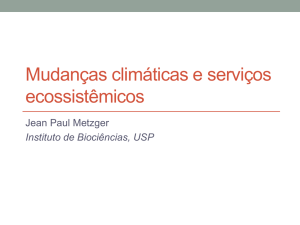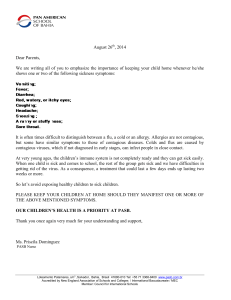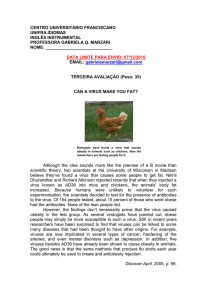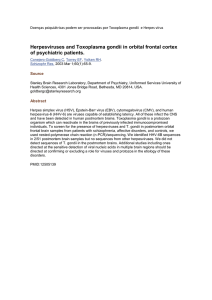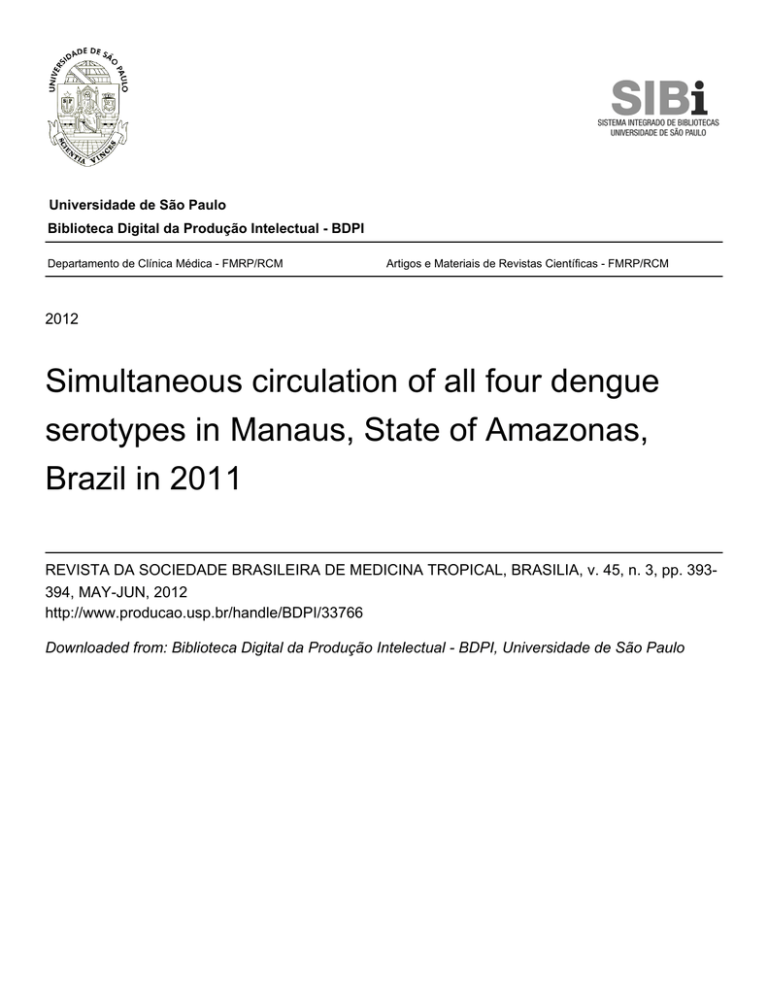
Universidade de São Paulo
Biblioteca Digital da Produção Intelectual - BDPI
Departamento de Clínica Médica - FMRP/RCM
Artigos e Materiais de Revistas Científicas - FMRP/RCM
2012
Simultaneous circulation of all four dengue
serotypes in Manaus, State of Amazonas,
Brazil in 2011
REVISTA DA SOCIEDADE BRASILEIRA DE MEDICINA TROPICAL, BRASILIA, v. 45, n. 3, pp. 393394, MAY-JUN, 2012
http://www.producao.usp.br/handle/BDPI/33766
Downloaded from: Biblioteca Digital da Produção Intelectual - BDPI, Universidade de São Paulo
Revista da Sociedade Brasileira de Medicina Tropical 45(3):393-394, may-jun, 2012
Communication/Comunicação
Simultaneous circulation of all four dengue serotypes in Manaus,
State of Amazonas, Brazil in 2011
Circulação simultânea dos quatro sorotipos do vírus dengue em Manaus, Estado do Amazonas,
Brasil em 2011
Michele de Souza Bastos 1,2 , Regina Maria Pinto de Figueiredo 1 , Rajendranath Ramasawmy 1,3 ,
Evaulino Itapirema1, João Bosco Lima Gimaque1,2, Lucilaide Oliveira Santos1,2, Luiz Tadeu Moraes Figueiredo4
and Maria Paula Gomes Mourão1,2,3
ABSTRACT
Introduction: Manaus, the capital city of the state of Amazon with nearly
2 million inhabitants, is located in the middle of the Amazon rain forest and
has suffered dengue outbreaks since 1998. Methods: In this study, blood
samples were investigated using reverse transcriptase-polymerase chain
reaction (RT-PCR), aimed at identifying dengue virus serotypes. Results:
Acute phase sera from 432 patients were tested for the presence of dengue
virus. Out of the 432 patients, 137 (31.3%) were found to be positive. All the
four dengue virus serotypes were observed. Conclusions: The simultaneous
circulation of the four dengue serotypes is described for the first time in
Manaus and in Brazil.
Keywords: Dengue. Reverse transcriptase-polymerase chain reaction.
Serotypes.
RESUMO
Introdução: Manaus, capital do Estado do Amazonas, com quase 2 milhões
de habitantes, está localizada no meio da floresta Amazônica e vem sofrendo
surtos de dengue desde 1998. Métodos: Neste estudo, amostras de sangue
foram investigadas pela Transcriptase reversa-reação em cadeia da polimerase
(RT-PCR), visando identificar os sorotipos de vírus da dengue. Resultados:
Soros de fase aguda de 432 pacientes foram testados para a presença do
vírus da dengue. Destes, 137 (31,3%) foram considerados positivos. Todos
os quatro sorotipos do vírus da dengue foram observados. Conclusões: A
circulação simultânea dos quatro sorotipos da dengue é descrita pela primeira
vez em Manaus e no Brasil.
Palavras-chaves: Dengue. Transcriptase reversa-reação em cadeia da
polimerase. Sorotipos.
Dengue fever (DF) is the most prevalent arboviral disease
worldwide. Around 2.5 billion people, especially those living in the
tropical and subtropical areas, are at risk of infection with dengue
virus1. Dengue viruses (DENVs) belong to the genus Flavivirus,
family Flaviviridae. They are single-stranded, positive-sense, RNA
viruses grouped into four antigenically related but distinct serotypes
named DENV-1, 2, 3, and 42.
1. Laboratório de Virologia, Fundação de Medicina Tropical Dr. Heitor Vieira
Dourado, Manaus, AM. 2. Programa de Pós-graduação em Medicina Tropical,
Universidade do Estado do Amazonas, Manaus, AM. 3. Curso de Medicina, Universidade
Nilton Lins, Manaus, AM. 4. Centro de Pesquisa em Virologia, Faculdade de Medicina
de Ribeirão Preto, Ribeirão Preto, SP.
Address to: Drª Maria Paula Gomes Mourão. Laboratório de Virologia/FMT-HVD.
Av. Pedro Teixeira 25, 69040-000 Manaus, AM, Brasil.
Phone: 55 92 2127-3447
e-mail: [email protected]
Received in 11/05/2011
Accepted in 29/07/2011
The first epidemic of dengue fever in Brazil, with isolation of the
virus, occurred in 1981, in the state of Roraima, when DENV-1 and
DENV-4 were identified3. In 1986, DENV-1 was identified in the state
of Rio de Janeiro4 and subsequently disseminated to other states of Brazil.
Manaus, the capital city of the Amazonas state with almost 2
million inhabitants, is located in the middle of the Amazon rain forest
and has suffered dengue outbreaks since 1998, when a huge outbreak
of dengue fever happened for the first time. Approximately 20,000
cases, caused by serotype 1, were reported5. At the end of the same year,
dengue serotype 2 was detected for the first time in this city. In 2001,
DENV-2 produced the second large outbreak with 30,000 reported
cases, including 60 dengue hemorrhagic fever cases6. On October of
2002, dengue serotype 3 was detected in Manaus. Since then, during
rainy seasons, it has suffered outbreaks with increasing number of
severe dengue cases, mostly in children7. Lately, on January of 2008,
in Manaus, dengue serotype 4 was detected for the first time in Brazil
after a lapse of 26 years8. Since then, all dengue serotypes have occurred
in turns in Manaus. However, following an upward trend of dengue in
Brazil, in the first months of 2011, a new dengue fever outbreak started
in Manaus with almost 40,000 cases, affecting residents from all regions
in the city and causing disease of distinct severities.
A total of 432 blood samples were collected from patients with
< 7 days of fever presenting to the outpatient clinic and the emergency
department of the Fundação de Medicina Tropical Dr. Heitor Vieira
Dourado, a tertiary and public health care center, reference for tropical
and infectious diseases, located in the city of Manaus, from January
to April of 2011. As these were diagnostic samples received during
the outbreak, no prior ethical clearance was required.
Viral RNA was extracted from serum samples using the QIAamp
Viral RNA mini kit (Qiagen, Germany) as per manufacturers'
instructions. Extracted RNA was stored at -70°C or used for RT-PCR
immediately. The RNA was used for dengue virus detection and
typing in a semi-nested multiplex reverse transcription-PCR protocol
as described by Lanciotti et al.9 RNA extracts of the positive samples
were also re-analyzed in a singleplex PCR reaction using the same
individual type-specific primers.
Of the 432 patients with DF, 137 (~31%) were found positive
for dengue virus by RT-PCR. One hundred and twenty-one had
monoinfection by one single serotype, while 16 had co-infections
by two serotypes of DENV. Of the 121 patients with monoinfection,
51, 31, 22, and 17 had serotypes DENV-2, DENV-4, DENV-3, and
393
Bastos MS et al - Circulation of all four dengue serotypes in Manaus
DENV-1, respectively. DENV-2 (42%) was predominant, followed
by DENV-4 (25.6%). The presence of co-infections was 13%
(16 out of 137 patients positive for dengue virus). Of these 16
patients with DF co-infections by at least two serotypes, DENV-4
and DENV-3 were observed in 37.5% (6/16). Other combinations of
co-infections were: DENV-1 and DENV-4 in 31% (5/16); DENV-1
and DENV-2 in 18.7% (3/16); and DENV-2 and DENV-3 in 12.5%
(2/16), respectively. So far, there are no data enough to support if coinfections are more severe than monoinfections. Further studies are
needed to address the potential severity in co-infections with different
dengue serotypes or even with dengue and other arboviruses.
The simultaneous circulation of all four serotypes in Manaus is a
clear evidence of dengue hyperendemicity, and it will, probably, result
in increasing morbidity, severe forms of dengue disease, and fatalities.
Therefore, this situation may increase the tendency, as previously
detected, for predominance of severe forms of dengue in children.
Further studies are necessary to understand the virulence as well
as spreading potential and magnitude of participation of each dengue
serotype and its combinations in this outbreak.
ACKNOWLEDGMENTS
We thank the board of directors and members of the Clinical
Department of the Fundação de Medicina Tropical Dr. Heitor Vieira
Dourado (FMT-HVD), as well as Dr. Milton Moraes (senior visiting
researcher), for their support and contribution to this work.
CONFLICT OF INTEREST
The authors declare that there is no conflict of interest.
394
FINANCIAL SUPPORT
This research was supported by the Fundação de Amparo à Pesquisa
do Estado do Amazonas (FAPEAM) through grant #887/2010.
REFERENCES
1. World Health Organization. Dengue and dengue hemorrhagic fever. [Cited 2011
may 4]. Available from: http://www.who.int/mediacentre/factsheets/fs117/en/.
2.Gubler DJ. Dengue and dengue haemorrhagic fever. Clin Microbiol Rev
1998;11:480 496
3. Osanai CH, Travassos da Rosa APA, Tang AT, Amaral RS, Passos ADC, Tauil PL.
Surto de dengue em Boa Vista Roraima. Rev Inst Med Trop São Paulo 1983; 25:53-54.
4. Nogueira RMR, Schatzmayr HG, Miagostovich MP, Farias MF, Farias Filho FC.
Mem Inst Oswaldo Cruz 1988; 83:219-225.
5. Figueiredo RM, Thatcher BD, Lima ML, Almeida TC, Alecrim WD, Guerra MV.
Exanthematous diseases and the first epidemic of dengue to occur in Manaus,
Amazonas, State, Brazil, during 1998-1999. Rev Soc Bras Med Trop 2004; 37:476-479.
6. Figueiredo RM, Bastos MS, Lima ML, Almeida TC, Alecrim WD. Dinâmica da
sorologia e isolamento viral na epidemia de dengue em Manaus (1998-2001).
Rev Soc Bras Med Trop 2002; 35 (supl 1): 94.
7. Rocha LA, Tauil PL. Dengue em criança: aspectos clínicos e epidemiológicos,
Manaus, Estado do Amazonas, no período de 2006 e 2007. Rev Soc Bras Med
Trop 2009; 42:18-22.
8. Figueiredo RMP, Naveca FG, Bastos MS, Melo MN, Viana SS, Mourão MPG,
et al. Dengue Virus Type 4, Manaus, Brazil. Emerg Infect Dis 2008 14:4:667-669.
9. Lanciotti RS, Calisher CH, Gubler DJ, Chang GJ, Vorndam AV. Rapid detection
and typing of dengue viruses from clinical samples by using reverse transcriptasepolymerase chain reaction. J Clin Microbiol 1992; 30:545-551.

